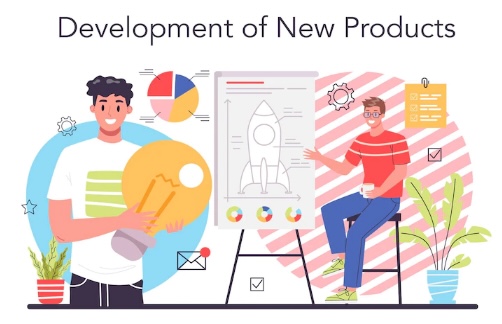How to Innovate Using an Idea Management Process

Innovation is a crucial factor in an organization’s success and growth. It allows a company to stay competitive and meet the changing needs of its customers and market. One way to drive innovation is through an idea management process.
This is a systematic approach to generating, collecting, and evaluating new ideas. It can identify those with the most significant potential for driving innovation and growth. This blog post will discuss the steps involved in an idea management process.
We will also examine the importance of building a culture of innovation within an organization. We will discuss how idea management software can support this process. By taking a structured approach to managing ideas, companies can find and pursue new opportunities for innovation. It will lead to long-term growth.
Innovate Using an Idea Management Process
1. Identify the Customers and Market Needs You Want to Meet
To drive growth and achieve their business objectives, organizations must identify the customers. This involves understanding the needs and preferences of target customers. It also includes the competitive landscape in which the organization operates.
Organizations can also use idea management solutions to streamline their idea management process. Idea and innovation management software can help organizations identify the needs and preferences of their target market. So they can develop ideas that meet those needs.
It provides tools for collecting and analyzing customer feedback and market data such as sales and competitive analysis. By using these tools, organizations can better understand what their customers want and need.
This information can inform the development of new ideas and products. It can help drive innovation and growth within the organization. Organizations can stay informed about market changes and identify new growth opportunities. Using idea and innovation management software, they can gather and analyze customer and market data.
2. Decide What Type of Innovation You Need
Organizations must consider what innovations they need to drive growth. There are three main types of innovation: incremental, disruptive, and radical.
- Incremental innovation involves making minor, incremental improvements to existing products. This innovation is often focused on improving efficiency, quality, or performance. It is typically less risky and can be implemented relatively quickly. Incremental innovation may provide a different level of impact than other types of innovation.
- Disruptive innovation involves creating new products or processes that disrupt existing markets. This innovation can be highly impactful. However, it can also be risky, requiring organizations to challenge established practices. This could disrupt their business models.
- Radical innovation involves creating entirely new products or processes. It can change the way an organization does business fundamentally. This type of innovation can be highly impactful. But it is also the riskiest and most challenging to achieve. It often requires significant resources and a high level of uncertainty.
Organizations can focus their innovation efforts and increase their chances of success. They need to identify the type of innovation that best suits their needs. Considering each type of innovation’s impact, feasibility, and risk is essential.

3. Set Up the Right Team Environment
Organizations must create the right team environment to drive innovation. This involves creating an environment that is conducive to creativity and collaboration. Employees should be encouraged to participate in the idea management process actively.
When setting up the right environment for innovation on a team, there are a few key things that organizations can consider:
- Collaboration is a crucial component of innovation. It allows different perspectives and expertise to be brought to bear on problems and challenges. Organizations can encourage collaboration by using tools and resources to facilitate communication. For example, project management software and virtual meeting platforms
- Organizations can foster a culture of innovation. They can encourage employees to think creatively. This can involve setting up programs and initiatives. It will encourage employees to develop new ideas and approaches.
- Provide the right resources and support. To drive innovation, organizations need to provide employees with the right resources and support. This can include tools and resources for idea generation and evaluation. It also provides training and development programs. This will help employees develop their skills to drive innovation.

4. Define Success and Clear Key Performance Indicators (KPIs)
Organizations must define success and KPIs to drive innovation. It will ensure that the idea management process is aligned with business objectives.
The first step is identifying the business objectives the idea management process intends to support. Once the business goals have been set, organizations can set up clear KPIs. These KPIs will measure how far they’ve come toward meeting these goals.
This can involve identifying specific metrics to track. Firstly, it involves the number of ideas generated. Secondly, the success rate of implemented ideas. Lastly, the impact of implemented ideas on the organization.
5. Business Case Development
A business case is a document that outlines the potential benefits, costs, and risks of an idea. It helps to determine whether the picture is worth pursuing. By developing a solid business case, organizations can ensure that they are investing in ideas likely to drive growth. As a result, they can achieve their business objectives.
To develop a strong business case, organizations can consider the following steps:
- Define the problem or opportunity that the idea is intended to address. This involves clearly defining the problem or opportunity the concept is designed to address.
- Identify the resources required to implement the idea. This involves identifying the resources necessary to implement the concept.
- Estimate the idea’s possible costs and benefits. This means figuring out the idea’s possible costs and benefits. It also includes tangible and intangible ones.
- Evaluate the risks and uncertainties associated with the idea. This involves evaluating the risks and uncertainties related to the concept. It includes potential challenges or barriers to implementation.
By making a solid business case for each idea, organizations can ensure they are investing in ideas likely to drive growth. It will help them reach their business goals.
Final Thoughts
In conclusion, the idea management process is crucial to driving innovation. The idea management process helps organizations identify and pursue growth opportunities. It provides a structured approach for identifying, evaluating, and implementing new ideas.
The key to success is having a clear and well-defined process and the necessary tools to support it. Organizations can drive innovation and growth by following the idea management process.




























